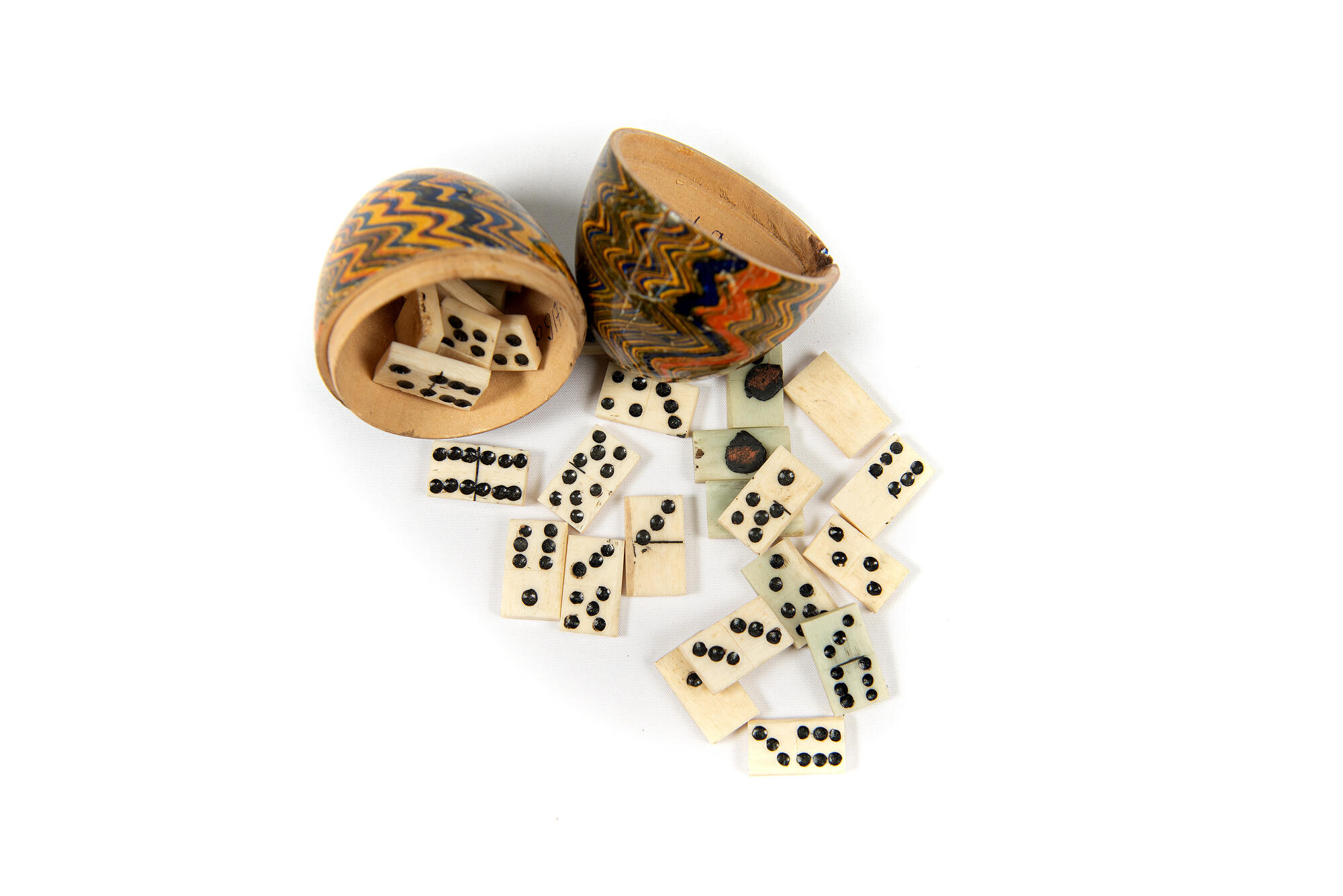Dominoes are thought to have originated in China in the 12th century. Dominoes were based on the dice game that was popular in China. Originally, dice were used for fortune telling or various magical ceremonies. It is known that this game was brought to Europe in the 18th century by Venetian merchants, who had become addicted to the game in the East, modified it and turned it into the very dominoes we know. One theory has it that the game was named after its black-and-white coloring. It reminded players of the white cloaks and black hoods worn by Dominican friars. According to another version, the game was invented by friars themselves. Their religion forbade them to play cards, so to help pass the time, the ingenious Abbot Domino invented a kind of dice game which no one would mind. Playing dominoes was allowed in Catholic monasteries — this is a historical fact. Some scholars believe that the name of the game comes from the prayer with which Catholic monks begin every activity — Domino gracias (Thanks be to God).
The game was not widely played in Europe until the 18th century. This long obscurity is difficult to explain. It may have been due to the fact that dominoes were mainly played by monks, who lead a reclusive lifestyle. In the 18th century, the game spread rapidly, and more variations appeared: Blitz, Matador, Bergen and others. Interestingly, it was thanks to dominoes that many card games (bingo, cribbage, forty-two and others) appeared. How dominoes came to Russia is also a mystery. According to one version, this game was introduced to his subjects by Peter the Great. According to another version, dominoes came to the country via port cities: sailors were fond of playing this game.
From a combinatorial point of view, dominoes are considerably more complicated than preference. At the same time, this game can be played without any special skills or complicated calculations. Perhaps, these features can account for its popularity.
The dominoes housed in the Kirsanov Local History Museum belonged to Elena Mikhailovna Boratynskaya, daughter of Mikhail Andreevich Boratynsky, nephew of the poet Evgeny Boratynsky. The ivory dominoes are hand-crafted. It comes in an egg-shaped wooden painted box.
The game was not widely played in Europe until the 18th century. This long obscurity is difficult to explain. It may have been due to the fact that dominoes were mainly played by monks, who lead a reclusive lifestyle. In the 18th century, the game spread rapidly, and more variations appeared: Blitz, Matador, Bergen and others. Interestingly, it was thanks to dominoes that many card games (bingo, cribbage, forty-two and others) appeared. How dominoes came to Russia is also a mystery. According to one version, this game was introduced to his subjects by Peter the Great. According to another version, dominoes came to the country via port cities: sailors were fond of playing this game.
From a combinatorial point of view, dominoes are considerably more complicated than preference. At the same time, this game can be played without any special skills or complicated calculations. Perhaps, these features can account for its popularity.
The dominoes housed in the Kirsanov Local History Museum belonged to Elena Mikhailovna Boratynskaya, daughter of Mikhail Andreevich Boratynsky, nephew of the poet Evgeny Boratynsky. The ivory dominoes are hand-crafted. It comes in an egg-shaped wooden painted box.




